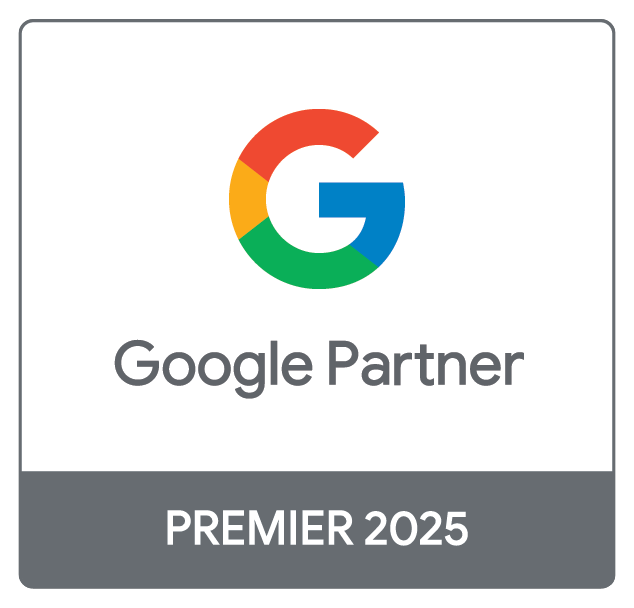In today’s fast-paced digital landscape, healthcare and medical practices must stay ahead of the curve to attract and retain patients. Digital marketing is no longer a luxury; it’s a necessity. The way patients search for, interact with, and select healthcare providers has evolved dramatically. Healthcare providers need to be aware of the latest digital marketing trends. This guide will help you understand how to leverage these trends to grow your practice and improve patient engagement.
1. Search Engine Optimization (SEO) for Healthcare Practices
SEO continues to be a critical component of any successful digital marketing strategy. For healthcare practices, local SEO is particularly important. Patients often search for medical services “near me,” making it essential for your practice to appear in local search results. Optimizing your website with geo-targeted keywords, maintaining accurate online business listings, and generating positive reviews on platforms like Google My Business will be crucial.
Key SEO Strategies for Healthcare:
- Optimize for local search with city and neighborhood keywords.
- Ensure your Google My Business profile is complete and regularly updated.
- Focus on generating high-quality, relevant content that addresses common patient questions.
- Build a strong backlink profile by connecting with local businesses and healthcare directories.

2. Content Marketing: Educate and Engage
Content marketing remains a powerful tool for establishing your practice as a trusted authority. Healthcare providers should focus on creating high-quality, informative content that addresses patient concerns and educates them about their health. Blog posts, videos, and infographics about common conditions, treatments, and preventive care can attract new patients while keeping your current ones informed.
Effective Content Ideas:
- Health Guides: Create comprehensive guides on managing chronic conditions like diabetes or hypertension.
- Treatment Videos: Produce explainer videos showcasing common procedures or treatments.
- Patient Testimonials: Share success stories from patients who have benefited from your care.
- Seasonal Tips: Offer health tips tailored to different seasons, such as flu prevention in winter or allergy management in spring.
3. Telemedicine Marketing
Telemedicine has become a staple of modern healthcare, especially in the post-pandemic world. Marketing your telemedicine services effectively can help you reach a broader audience, including patients who prefer virtual consultations. Highlighting the convenience, accessibility, and safety of telemedicine on your website and social media channels can set your practice apart.
Telemedicine Marketing Tips:
- Promote Convenience: Emphasize the ease of booking appointments and conducting consultations from home.
- Educate Patients: Create content explaining how telemedicine works and what patients can expect during a virtual visit.
- Target Specific Conditions: Highlight how telemedicine can effectively manage chronic conditions or follow-up care.
4. Social Media Engagement
Social media is a powerful platform for engaging with patients and building a community around your practice. Healthcare providers should leverage platforms like Facebook, Instagram, and LinkedIn to share health tips, patient testimonials, and updates about your practice. Social media also provides an avenue for real-time interaction with patients, which can enhance patient satisfaction and loyalty.
Social Media Best Practices for Healthcare:
- Share Educational Content: Post tips on healthy living, preventive care, and wellness.
- Host Q&A Sessions: Engage with your audience by hosting live Q&A sessions on health topics.
- Highlight Your Team: Introduce your healthcare team to humanize your practice and build trust.
- Monitor Reviews: Respond promptly to patient reviews and feedback to maintain a positive online reputation.

5. Patient-Centric Website Design
Your website is often the first point of contact for potential patients. A well-designed, user-friendly website can significantly impact your practice’s ability to attract and retain patients. Healthcare websites should prioritize mobile optimization, intuitive navigation, and easy access to essential information like services offered, doctor bios, and contact details.
Key Features for Healthcare Websites:
- Mobile-First Design: Ensure your website is fully responsive and easy to navigate on smartphones and tablets.
- Clear Call-to-Actions: Make it simple for patients to schedule appointments, contact your office, or access telemedicine services.
- Patient Resources: Offer downloadable resources, such as intake forms, health guides, and FAQs.
- Secure Patient Portal: Provide a secure portal where patients can view their medical records, lab results, and communicate with your team.
6. Personalized Marketing and Patient Experience
Personalization is increasingly important in healthcare marketing. Patients want to feel valued and understood, and personalized marketing efforts can help achieve this. Using data-driven insights, healthcare providers can tailor their marketing messages to meet the specific needs and preferences of their patient population.
How to Personalize Your Marketing:
- Email Campaigns: Segment your email list based on patient demographics, conditions, or past interactions to send targeted content.
- Personalized Reminders: Send personalized appointment reminders or follow-up care instructions via email or SMS.
- Customized Content: Develop content that speaks directly to different patient groups, such as pediatrics, geriatrics, or women’s health.

7. Pay-Per-Click (PPC) Advertising
PPC advertising allows healthcare practices to reach potential patients through targeted ads on platforms like Google and social media. PPC campaigns should be hyper-focused on local searches and specific medical services. By bidding on keywords related to your specialties and location, you can ensure that your ads appear when patients are searching for the services you offer.
Optimizing PPC for Healthcare:
- Geo-Targeted Campaigns: Focus on reaching patients within your practice’s service area.
- Service-Specific Ads: Create ads for specific services, such as “urgent care near me” or “pediatric dentist.”
- Landing Pages: Direct traffic to optimized landing pages that provide detailed information about your services and encourage conversions.
8. Online Reputation Management
In healthcare, your online reputation can make or break your practice. Patients often rely on reviews and ratings when choosing a healthcare provider. Actively managing your online reputation is essential. Encourage satisfied patients to leave positive reviews, and promptly address any negative feedback to maintain a strong reputation.
Reputation Management Tips:
- Solicit Reviews: Ask satisfied patients to leave reviews on platforms like Google, Yelp, and Healthgrades.
- Monitor Online Mentions: Use tools to track mentions of your practice online and respond to any feedback.
- Transparency: Address negative reviews professionally and transparently to show your commitment to patient satisfaction.

9. Video Marketing
Video content is an engaging way to connect with patients and explain complex medical information. Healthcare practices should invest in creating high-quality video content, such as patient testimonials, procedure explanations, and health tips. can enhance patient trust and drive more traffic to your website.
Types of Videos to Create:
- Doctor Introductions: Short videos where doctors introduce themselves and explain their specialties.
- Patient Stories: Testimonials from patients discussing their positive experiences with your practice.
- Procedure Explainers: Step-by-step videos that demystify medical procedures and what patients can expect.
- Health Tips: Quick, informative videos offering tips on wellness, preventive care, and managing chronic conditions.
10. Voice Search Optimization
With the rise of smart speakers and voice assistants, optimizing your content for voice search is becoming increasingly important. Patients are using voice search to find healthcare providers, ask health-related questions, and book appointments. In 2024, ensure your practice is optimized for voice search by focusing on natural language and question-based keywords.
Voice Search Optimization Strategies:
- Conversational Keywords: Use keywords and phrases that match how people speak rather than how they type.
- Answer FAQs: Create content that answers common patient questions, as these are often used in voice searches.
- Structured Data: Implement schema markup to help search engines understand your content and improve your chances of appearing in voice search results.
Stay Ahead of the Curve
As the digital landscape continues to evolve, healthcare and medical practices must adapt to remain competitive. By staying on top of these digital marketing trends, you can attract new patients, retain existing ones, and build a strong online presence. Whether it’s through SEO, content marketing, or telemedicine, the key is to focus on strategies that provide value to your patients and enhance their experience with your practice.


